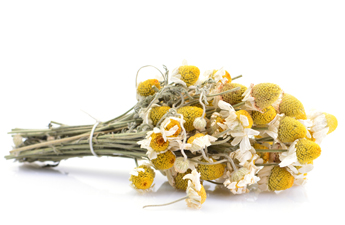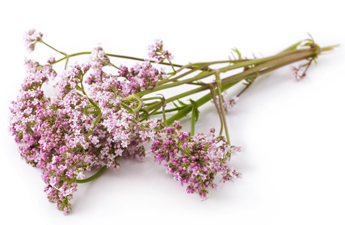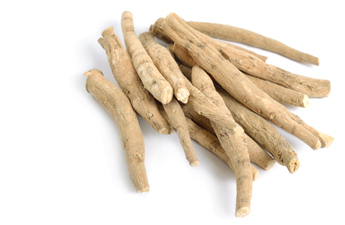Is Rosemary Our Next Superfood?
By Stephanie Hazel, Tradtional Western Herbalist
03/04/2019
In our passion for rare and exotic herbs and superfoods, it is easy to overlook the superfoods that might just be growing in our backyard. Rosemary falls prey to this problem, being overlooked due to its commonplace nature. However, emerging research is showing it not only has enough anti-inflammatory punch to rival turmeric, but it is also an effective antidepressant!
Herbalists commonly use rosemary for heart, liver and digestive health, but it is most useful in any of these conditions when they are linked to depression and emotional states (Ross 2003:649).
And the final leaf in Rosemary’s laurel? It boosts brain function, fighting dementia and Alzheimer’s.
HISTORY AND MYTH
Rosemary has been used in European herbal medicine since at least the 1400s for both physical and psychological purposes (Ross 2003:635). It has largely dropped out of fashion in herbal medicine over the past 50 years, however it is of significant interest in pharmacological research. Rosemary extract is also often used as a preservative in food and cosmetic due to its strong antioxidant effect (Shipard 2003:281).
Myth and legend around Rosemary abounds. The Greeks associated it with memory, and it therefore became an emblem of fidelity between lovers (Grieve 1971:682). It was also worn as a garland by scholars in Ancient Greece, to improve memory and concentration (Braun & Cohen 2010:846). In the Middle Ages, it was hung in sick rooms and burnt as an incense to protect from the plague. The Spanish revered it as a holy herb that had sheltered the Virgin Mary on her flight into Egypt, and, one legend states that Rosemary flowers were originally white, but turned blue when Mary hung her robe on a Rosemary bush (Shipard 2003:278).
One of the most amusing myths about Rosemary is the 19th Century British belief that Rosemary will only grow well in a house where the woman rules the roost, at times with negative effects on the plant itself; as Grieve (1971:682) divulges: “so touchy are some of the [men] upon this point, that we have more than once had reason to suspect them of privately injuring a growing rosemary in order to destroy this evidence of their want of authority.”
MEDICINAL USES
A broad range of actions are attributed to rosemary, including antioxidant, antimicrobial, anti-inflammatory, antispasmodic, hepatoprotective, and neuroprotective (Braun & Cohen 2010:847-852), as well as carminative, spasmolytic, cholagogue and circulatory stimulant (Mill & Bone 2005:555). The actions most thoroughly demonstrated in pharmacological and clinical (mainly animal) studies are its anti-inflammatory and antioxidant effects.
The energetics, or whole-body effect, of Rosemary are that it is warming, strengthening, stimulating and dispersing (Holmes 1989:330; Ross 2003:635). This combination of actions is relatively unusual and makes it an incredibly valuable herb with a wide range of applications. It is best suited to a condition where there is both weakness/exhaustion and tension/pain, something that is increasingly common.
Action 1: Strengthens and stimulates cardiovascular function
By inducing vasodilation and smooth muscle relaxation, Rosemary supports healthy cardiovascular function. It stimulates the circulation of blood to the extremities, reduces blood cholesterol and strengthens the heart and arteries.
This makes it useful in artersclerosis, in poor circulation and for recovery from heart surgery or heart attacks.
Action 2: Cleanses and supports the liver
Rosemary is a fantastic, broad-spectrum liver herb. It protects liver cells, improves clearance of hormones in the liver, increases bile flow and reduces inflammation of liver tissue.
This makes it useful for hepatitis, protection from drugs and alcohol, general liver toxicity and recovery from drug dependence.
Action 3: Improves brain function, memory & mood
Rosemary increases blood flow to the brain, and protects & nourishes brain neurons through its anti-inflammatory and antioxidant actions. Significant pharmacological research and animal trials have demonstrated Rosemary’s antidepressant effect.
This makes it useful for dementia, depression, poor memory and concentration, headaches and migraines.
Action 4: Strengthens and relaxes digestive function
By relaxing intestinal muscle and increasing bile flow, rosemary tonifies and calms digestive function.
This makes it useful for bloating, gas, and digestive pain that is worse when fatty or fried foods are consumed.
HOW TO USE ROSEMARY
For improving brain function, mood and headaches, the best way to use rosemary is actually via inhaling the essential oil. Recent studies have shown measurable increase in memory function after simply using an essential oil snifter.
For digestive, liver and cardiovascular complaints, rosemary is best made into a fresh tea (if you are lucky enough to have some growing in your garden) or used in a tincture.
Another fun way is to make a rosemary vinegar, that can be used regularly in salads, on roast meats and in sauces.
REFERENCES
S.Cheung and J.Tai, “Anti-proliferative and antioxidantproperties of rosemary Rosmarinus officinalis,” Oncology Reports, vol. 17, no. 6, pp. 1525–1531, 2007.
- Bakirel, U. Bakirel, O. U ̈ . Kele ̧s, S. G. U ̈ lgen, and H. Yardibi, “In vivo assessment of antidiabetic and antioxidant activities of rosemary (Rosmarinus officinalis) in alloxan-diabetic rabbits,” Journal of Ethnopharmacology, vol. 116, no. 1, pp. 64–73, 2008.
- O. Kennedy and A. B. Scholey, “The psychopharmacology of European herbs with cognition-enhancing properties,” Current Pharmaceutical Design, vol. 12, no. 35, pp. 4613–4623, 2006.
- G. E.-D. Abdel-Wahhab, K. A. El-Shamy, N. A. E.-Z. El-Beih, F. A. Morcy, and F. A. E. Mannaa, “Protective effect of a natural herb (Rosmarinus officinalis) against hepatotoxicity in male albino rats,” Comunicata Scientiae, vol. 2, no. 1, pp. 9–17, 2011. Evidence-Based Complementary and Alternative Medicine
- Wortmann, “Dementia: a global health priority—highlights from an ADI and World Health Organization report,” Alz- heimer’s Research and Therapy, vol. 4, no. 5, article 40, 2012. J. L. Cummings and C. Back, “The cholinergic hypothesis of neuropsychiatric symptoms in Alzheimer’s disease,” The Amer- ican Journal of Geriatric Psychiatry, vol. 6, no. 2, supplement 1, pp. S64–S78, 1998.
- Habtemariam, “In vitro antileishmanial effects of antibacte- rial diterpenes from two Ethiopian Premna species: P. schimperi and P. oligotricha,” BMC Pharmacology, vol. 3, article 6, 2003
- Jiang, N. Wu, Y.-J. Fu et al., “Chemical composition and anti- microbial activity of the essential oil of Rosemary,” Environmen- tal Toxicology and Pharmacology, vol. 32, no. 1, pp. 63–68, 2011.
- Giacobini, “Cholinesterases: new roles in brain function and in Alzheimer’s disease,” Neurochemical Research, vol. 28, no. 3-4, pp. 515–522, 2003.
Al-Sereitia, M.R., Abu-Amerb, K.M., & Sena, P. (1999). Pharmacology of rosemary (Rosmarinus officinalis) and its therapeutic potentials. Indian Journal of Experimental Biology 37:124-131.
Braun, L. & Cohen, M., (2010). Herbs and Natural Supplements – An evidence based guide. Australia: Churchill Linvingstone.
Hoffman, D. (2003). Medical Herbalism: The science and practice of herbal medicine. Vermont, USA: Healing Arts Press
Holmes, P. (1989). The Energetics of Western Herbs: Integrating Western and Oriental herbal medicine traditions. USA: Artemis Press.
Ross, J. (2003). Combining Western Herbs and Chinese Medicine: Principles, practice and materia medica. USA: Greenfields Press.
Join our community!
Subscribe now to stay up to date with great offers, new products, and insights from the wonderful world of herbs!


 Nextwave
Nextwave

